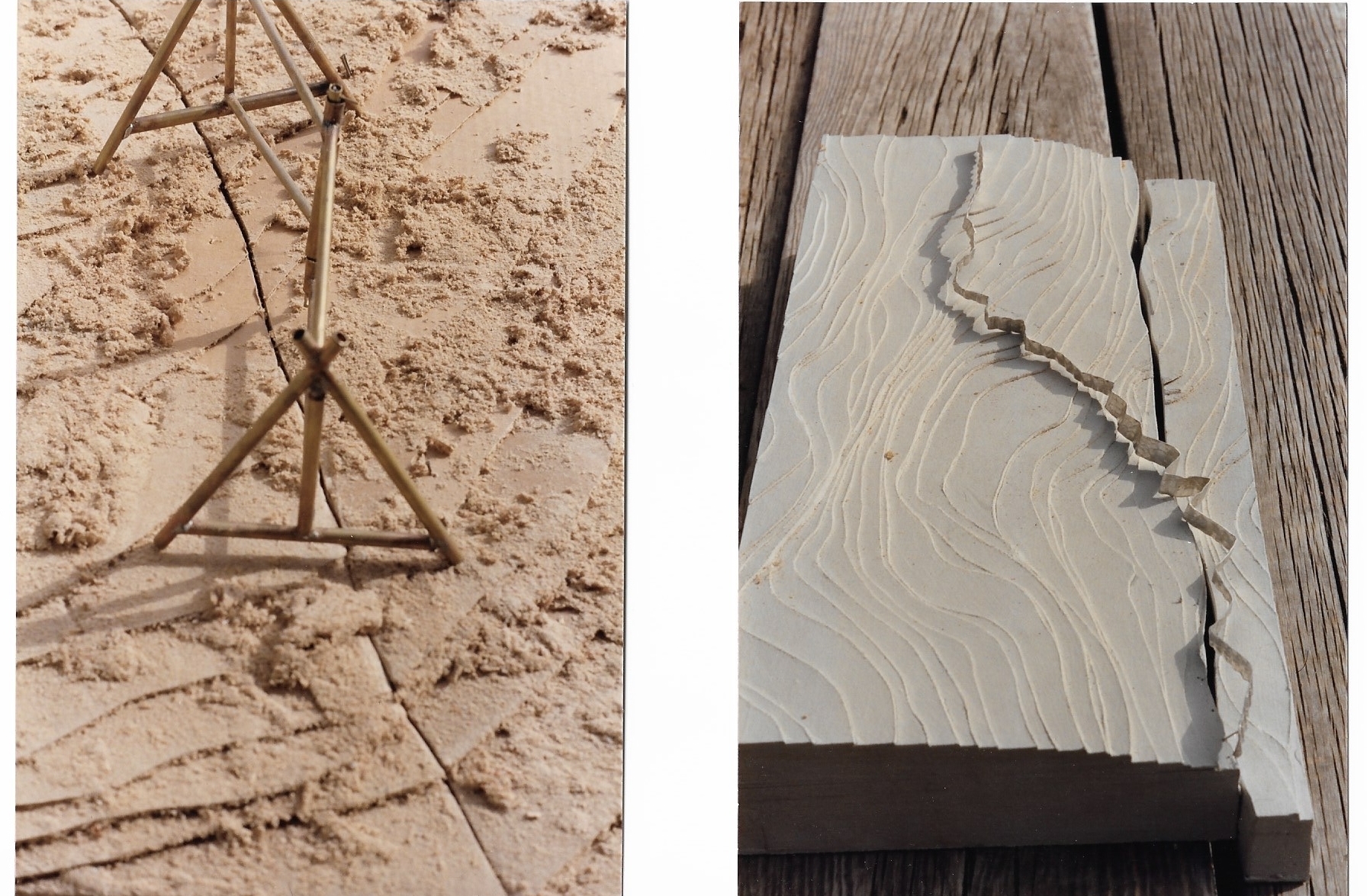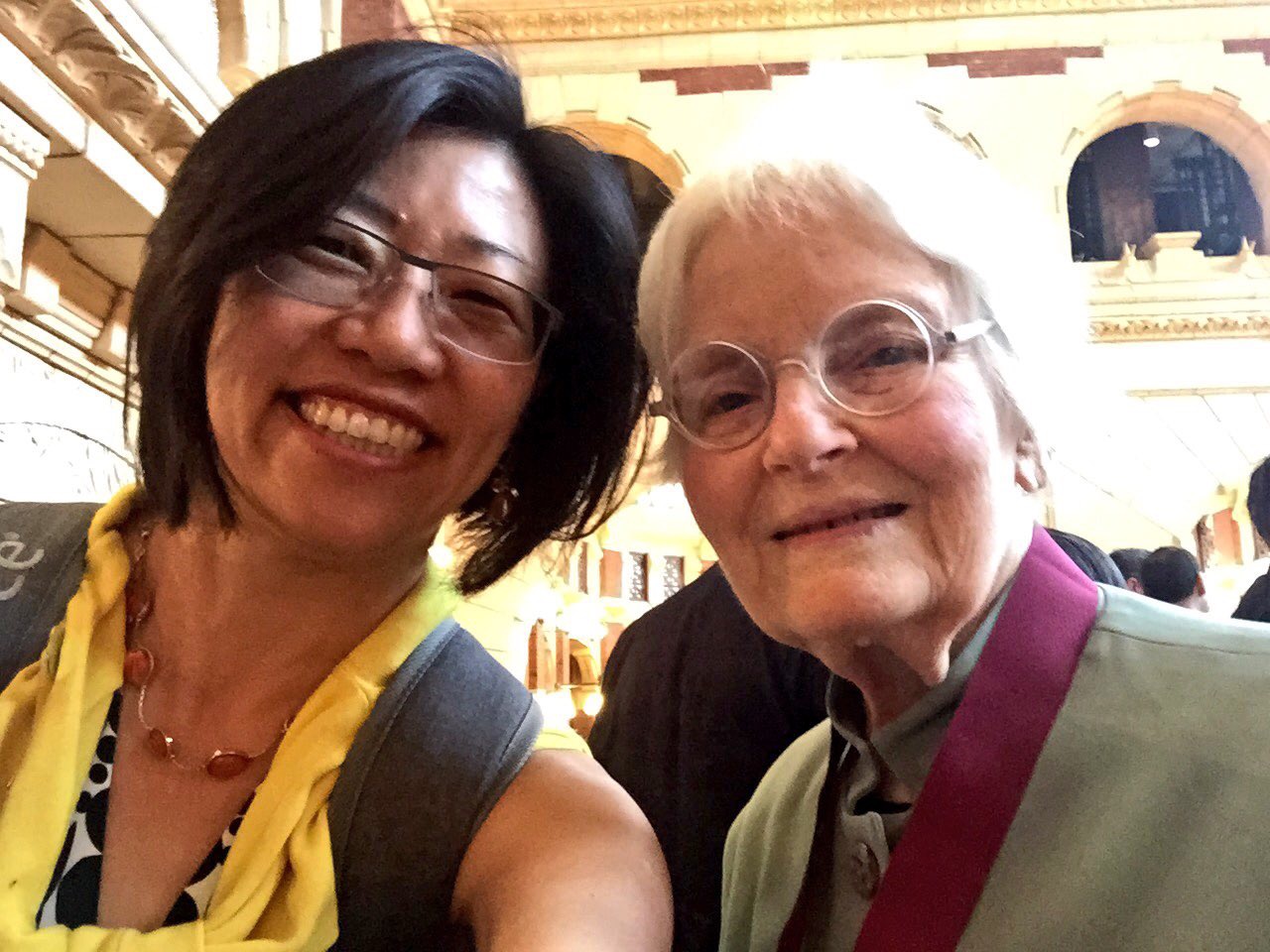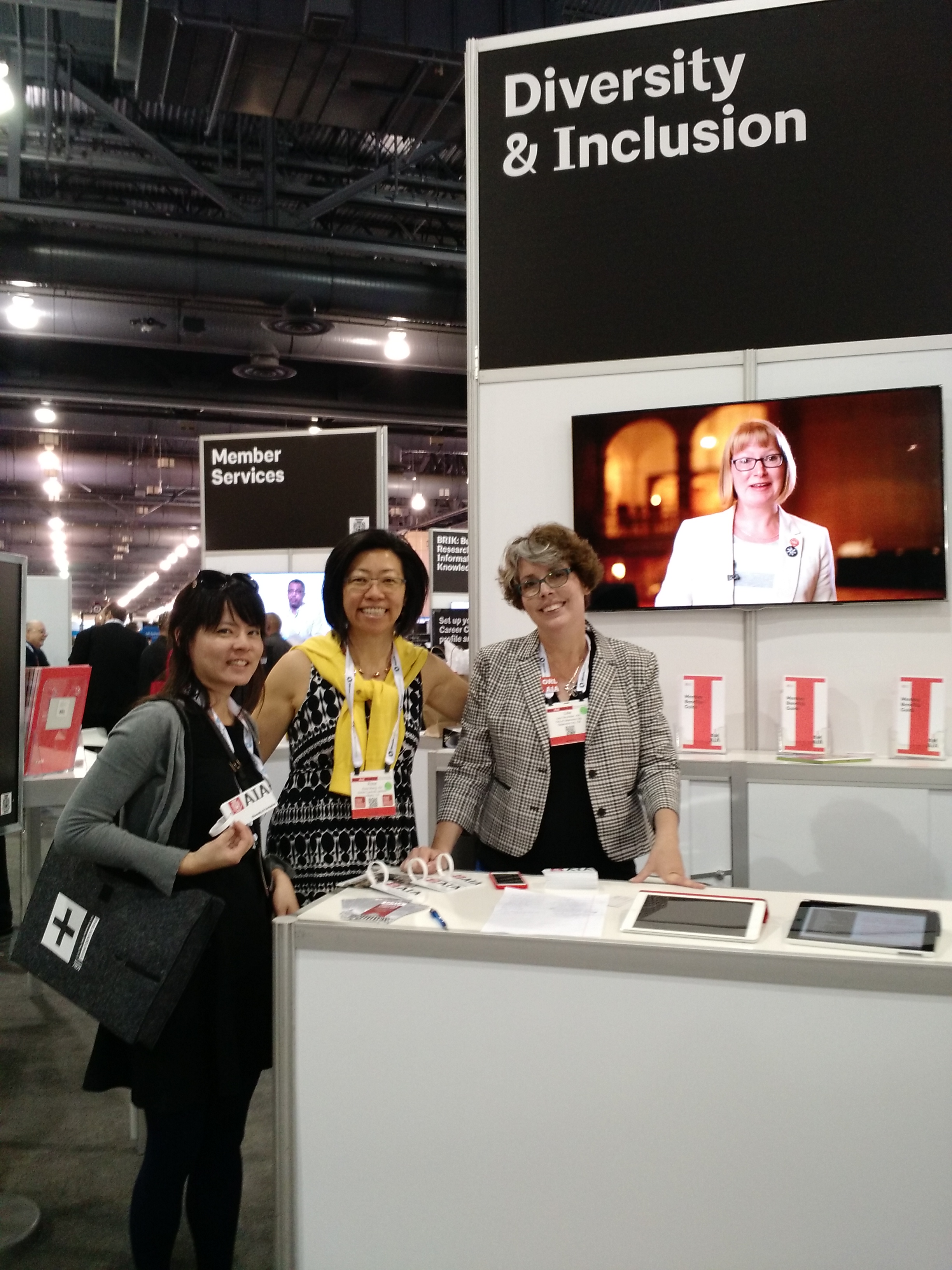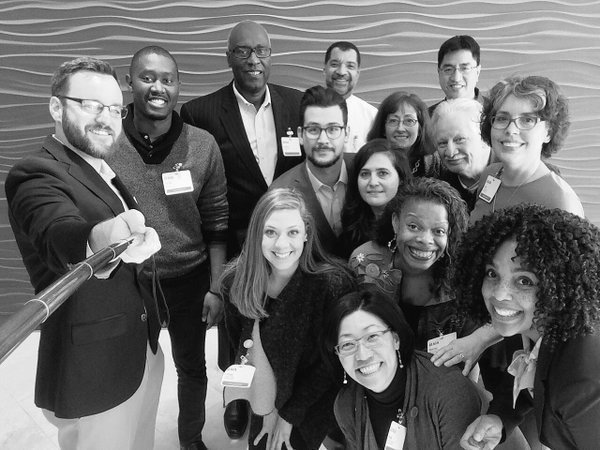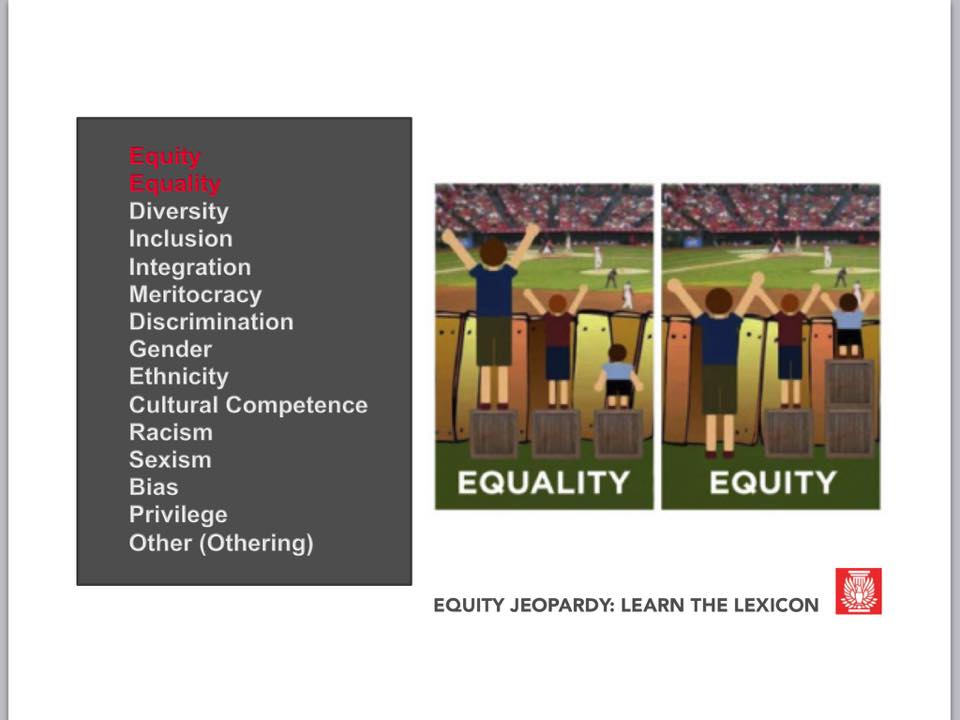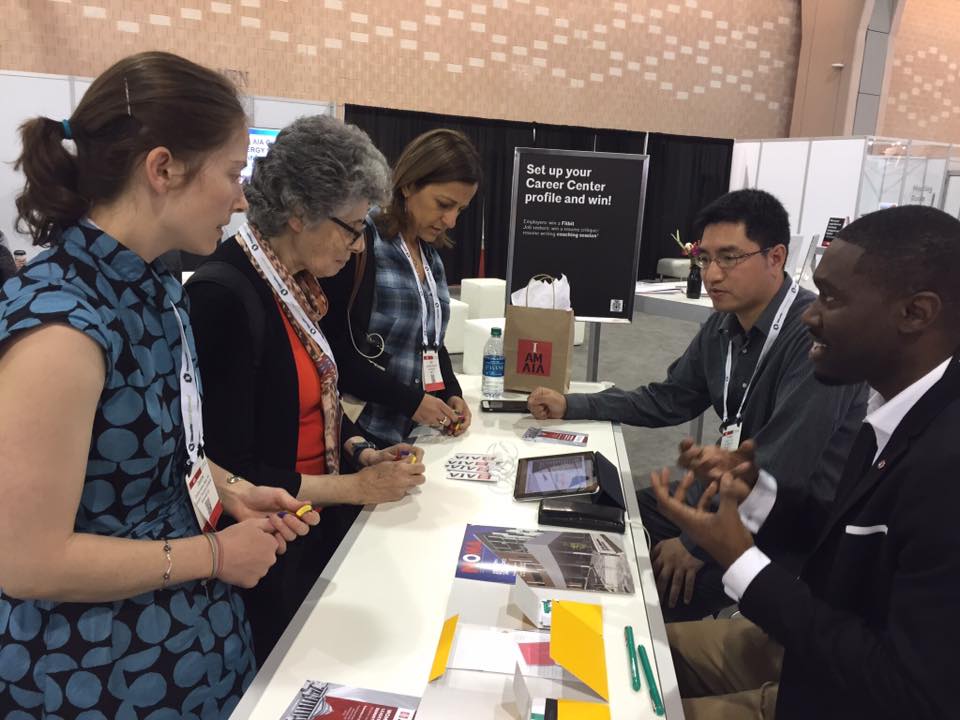Meet the 2016 Equity by Design Hackathon Winners!
A collaboration by Jayshree Shah, Jonathan Meadows, Rachel Williams and Ryan Orr
TEAM 4 - "F.I.M." Ryan Orr, Rachel Williams, Jayshree Shah and Jonathan Meadows
On May 18, 2016, four enthusiasts found themselves together at the Equity by Design Hackathon, an AIA Philadelphia pre-Convention workshop. All were strangers to each other, one was a returning hacker, and the other three were embracing the spirit of adventure. Fast forward to Happy Hour, and this team is being cheered by the crowds as the Winner of the Hackathon. Learn more about their experience, in their own words!
HACKATHON, PART 1: DEFINE THE PROBLEM
LEARNING FROM HACKATHON METHODOLOGY: GET CURIOUS
We had an interesting ice-breaker that indirectly informed some of our brainstorming. The "inside the egg or outside the egg" icebreaker made us think of things we had in common (i.e. skillsets) vs. what we did not (i.e. things that set us apart).
The afternoon kicked off with an icebreaker session in order to get to know the individuals sitting our table and start the dialog between us. An egg shape was drawn on a white board, and we wrote our commonalities inside the circle, and our individualities outside of it. We found it to be difficult, because we are all more alike than we originally thought. It was a great exercise to get us all talking and comfortable with each other.
The icebreaker completed, a group of panelists Phil Bernstein, FAIA; Yasmine Mustafa; Robert Yuen; and Rosa Sheng, AIA; moderated by Lilian Asperin Clyman , AIA - presented ways in which they identified problems within their field and their strategies to solve them. We were then launched with the same task: in just a few hours, our team was to define a problem, craft a solution, a pitch it to a group of “venture capitalists” - our team of jurors (Franches Choun from McCarthy Building Company, Anthony Gold from ROAR for Good and Lilian Asperin Clyman from WRNS Studio).
Coming from different backgrounds, our team began by outlining challenges we have experienced within the architectural profession. We made a long list: Virtual reality; desire but inability to share skills/gain new skills; lack of forum for providing or receiving input across all projects; advancing our professional careers; and the all too common challenge that many of us are working on project roles that are uninteresting to us or not within our expertise. It was interesting how we all quickly gravitated toward similar topics.
HACKATHON, PART 2: CRAFT SOLUTIONS
It seemed we only held onto the directions lightly. When directed to decide what category our problem and solution would be in (architecture/architecture+tech/outside architecture), our consensus was that problems in one area are often solved by solutions in another.
The team felt that the ability to share skills (especially if you are new to a firm), provide feedback (at any level within the profession) and develop a method to assign project roles, would be essential to any architectural firm.
Once we began to refine our problem statement, we had a visceral reaction to it as a real problem within the industry. We translated these into questions to help us sync up and clarify the issues we were enthusiastic to hack together.
LEARNING FROM HACKATHON METHODOLOGY: ASK “WHAT’S NEXT?”
- How often are firms able to leverage the right skill sets for a certain project?
- How can you best share your passions (resume) and contribute your skills?
- Have you ever felt you were not compatible with a particular role or project at work?
HACKATHON, PART 3: PROTOTYPE
We had all experienced a similar disappointment.
“When seeking a new position within a firm, an aspiring employee will create a resume to document their skills, experiences, expertise, and interests. A lot of time on the part of the individual is spent to create this resume, and by the hiring staff to select the right applicant for the position. However, after the hire has been made, the resume is discarded and that information is often not disseminated, meaning that project managers, other principals, and the rest of the staff knows nothing about the new employee, and it is often intimidating to speak out for your own skills and interests in the new environment. This creates a profound disconnect between the hiring process and the integration of the employee into the workplace. “
-Jonathan Meadows
As our group began to list multiple issues regarding architecture, we looked to see if any of these issues could be combined and tackled by the same solution. So we outlined how we could get our arms around our “hack”.
LEARNING FROM HACKATHON METHODOLOGY: ASK WHAT’S NEXT?
Just as architects are really good at developing a BIM model and using analysis tools to study a project and find the best problem-solving solutions, we need to look within our own firms / practices to manage our talent better and more efficiently. Another way of looking at it is digitally modeling a firm environment (people, resources, etc) and using the data in a smart way to serve the firm's needs. i.e. FIM: Firm Information Management.
WHO ARE WE SERVING?
First an evaluation and method of implementation within different firms would be necessary to properly develop to tool for each organizations use. The tool, from an employee perspective, focuses on self-development and enrichment, while the employer driven design evolves into a management system.
LEARNING FROM HACKATHON METHODOLOGY: RAPID PROTOTYPING
The ultimate solution, F.I.M. (Firm Information Management), would create an individual profile for each employee to put forth those skills that make us unique to the places we work, but all towards the common goal of putting forth our best efforts in the office as a whole.
WHAT ARE THE ATTRIBUTES OF THE FRAMEWORK?
The management system provides an outlook of the firm - similar to architectural BIM models. The system is modular and allows for flexibility in its operation. An employee has an avenue through to provide a contribution, even when not assigned to a specific project, which can help in both exercising existing skills and also in developing or broadcasting an interest in new skills.
WHO ARE THE KEY PLAYERS?
Each employee within the firm creates a user profile to record their unique skills, project experience, and interests through keywords. This user profile can also harvest data from project work and ratings on comments to keep skills and experience up to date.
Each project manager creates a project profile to record their projects’ unique problems or skills required. Open questions can also be highlighted to seek input from the entire firm.
HOW DOES IT WORK?
The algorithm can then provide project managers with team members who are a good fit for their project, with a high percentage of skills matching. The algorithm can also notify employees when there are projects seeking their skills, or open questions that may interest them.
WHAT ARE OUR GOALS?
Better design * Happier clients * Happier employees * Equitable voices for all within the company * Professional development * Team optimization * Skill-sharing * Confidence builder * Molding your role * Crowdsource wisdom - efficient knowledge transfer * etc.
HOW WILL WE KNOW IT THIS IS WORKING?
We can measure reductions in the under-utilization of staff and allow for management to take advantage of developing or placing the right skillsets on certain tasks or projects. We will find effective ways to match people with projects in the office through a platform internal to a company. And, we will leverage knowledge and experience by sharing information and solutions in a transparent method.
HACKATHON, PART 4: PITCH
We considered the stated evaluation criteria: relevance to Equity by Design, User Experience, Impact, and Pitch.
F.I.M Team Pitch to Jurors
The first teams to present set the bar for quality of the pitch and inspired us to aim high. All of the teams had great ideas and were tough competition. As the fourth of five teams, we got up to present. Jayshree did a magnificent job of setting the tone for the presentation and providing an energy and enthusiasm that we were all able to feed off and carry through the proposal. The story of our solution went well. We survived! Actually, we did better than survive. It came out great! Much better than we had ever planned.
LEARNING FROM HACKATHON METHODOLOGY: TAKE PEOPLE ON A JOURNEY
We want to speak about equity gained for all individuals within a firm, whether new to the firm or a partner. These are just a few of the outcomes that would bring joy to our day-to-day experience: Experiencing an collaborative culture * Sharing skillsets without fear of being overshadowed * Voicing your knowledge and experience across all projects within a firm * Providing input even on a small scale for potentially large impact * Requesting to learn a skill * Requesting to work on certain project/project type because it is meaningful * Enhancing your career path * Contributing to the on-boarding or re-integration process * etc.
Envisioning F.I.M. further - it will go beyond architecture.
HACKATHON, PART 5: DIGEST
We were surprised to win, to say the least. (Ha absolutely!) And once we sat back down, we all had a look of astonishment that it went as well as it did.
What did we learn from this?
Risk - Looking for those low risk situations and just going for it. Seeing what change can become of it.
Pitch - Learning to use the story and structure to connect with an audience, even introverts can learn to pitch.
Prototype - The value of trying something as a tool to communicate the intent as well as to work out bugs.
Teamwork - Using complementary skills to develop better solutions than any of us alone could make.
Special Thanks to our EQxD Hackathon 2016 Sponsors!
EQxD Hackathon 2016 Recap - Blog Series
(Catch up here if you missed these earlier posts)
Dear Udo, You were the original Hacker
Meet the 2016 Equity by Design Hackathon Winners - "F.I.M."
2016 EQxD Hackathon Recap: Team 2 - Where in the World...?
2016 EQxD Hackathon Recap Team 1: SWIPE RIGHT! w/ ArchMatch.com
Agora App: A Modern Day Forum For Architectural Practice
How can Architects demystify the built environment?
2016 EQxD Hackathon Jurors: Working with the "A" Team













